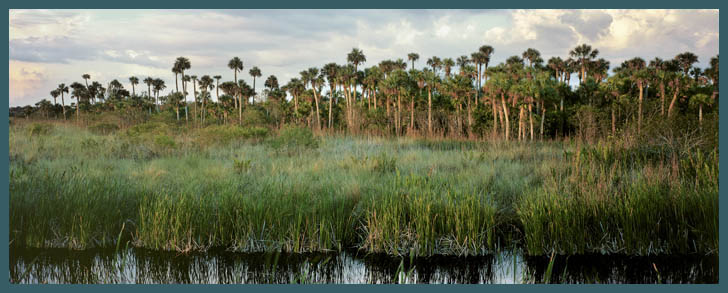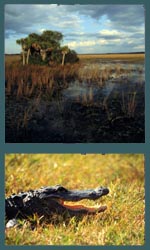|
Florida Everglades
What in the World is an Anole?
 photo provided by National Park Service - US Department of the Interior (photographer Dick Groat)
What is four-to-eight inches long, slender, green all over, and has a long nose? Yep! You guessed it; an Anole Lizard, pronounced uh-no-lee. It is also commonly referred to as a chameleon because it can change colors like chameleons, but it is not related whatsoever. This green anole lizard can quickly change its bright colorful shade into a dull brown color. The scientific name, Anolis carolinensis, of this green, tree-dwelling lizard that is usually found in the warm and humid climates found in Florida is but one of over 300 species. Our research indicated that the Green Anole is the only native member of the genus here in Florida.
Live insects, spiders and moths are the most commonly consumed prey for the anoles, who have been known to live up to five years. This anole lizard, a term used to refer to a variety of similar critters with scaly skins, long tails and four legs, swallow their food whole. They also have ear openings, adhesive toe-pads and claws that enable them to climb easily, and excellent vision. Males are larger than the females and their snouts are longer too. Males have a flap, or dewlap, under their throat which turns into a fiery red color when courting or mating, or during a territorial display, when you can watch them as they bob their heads up and down.
Did you know that anoles can become stressed like humans? And, when they become stressed or ill, their color changes. Anoles shed not only their skin during the shedding season, which it then eats; but it can also shed its tail and later grow a replacement. Highly territorial, male anoles have been known to fight each other if they feel threatened.
Beginning in early April and continuing through late August, the anole lizards mate. Approximately two-to-four weeks later the female will lay her first clutch of eggs which will be buried in the soil and in 35-to-40 days the eggs will hatch. Sadly, the baby anoles are left to defend themselves.
Apparently, there are more brown anoles than green and the reason given was that the brown anole is a prolific breeder. So prolific in fact, that during the building boom of the early 1970s, literally thousands of brown anole eggs were carried to different parts of the state in tropical landscape plants which developers had purchased from nurseries in the Keys and near Miami. And now you know all there is to know about anoles!
#
The ABCs of the Florida Landscape is written by freelance writer Maureen Sullivan-Hartung who has resided in Naples for nearly 30 years and loves learning about all aspects of the local flora and fauna. Another passion of hers is local history and she authored a book in November 2010, titled, Hidden History of Everglades City and Points Nearby, published by The History Press. Check her website for the book's availability or additional information about the author at www.maureenwrites.com.
msh12011
|


